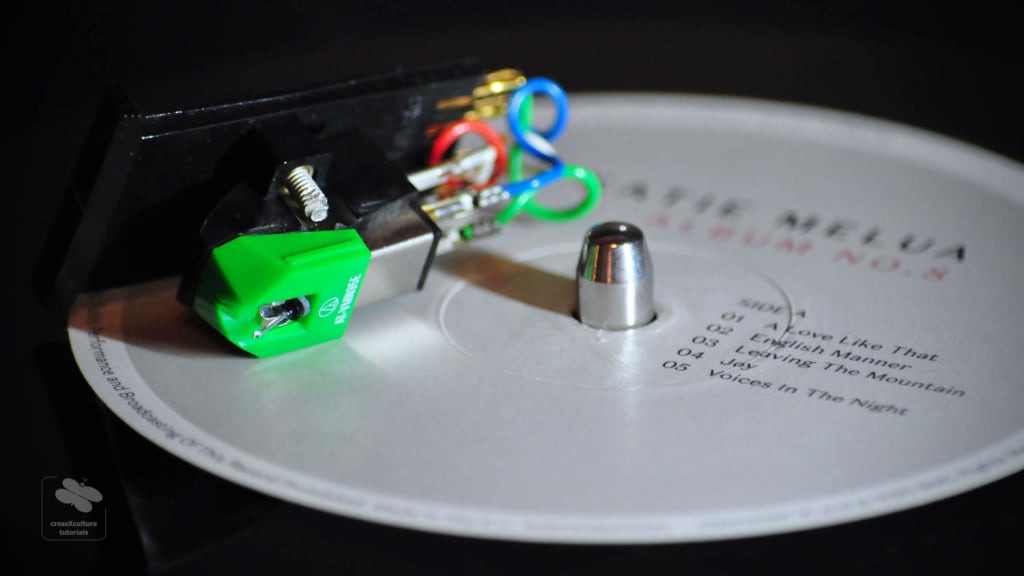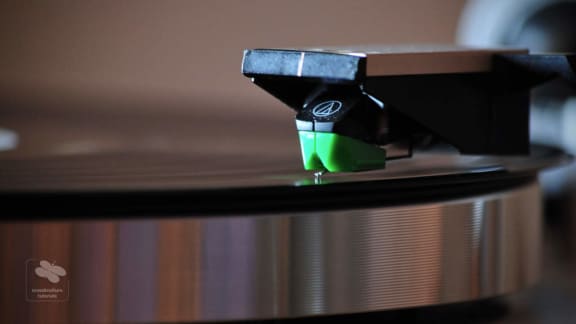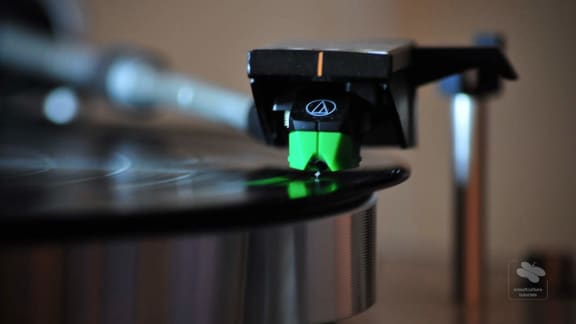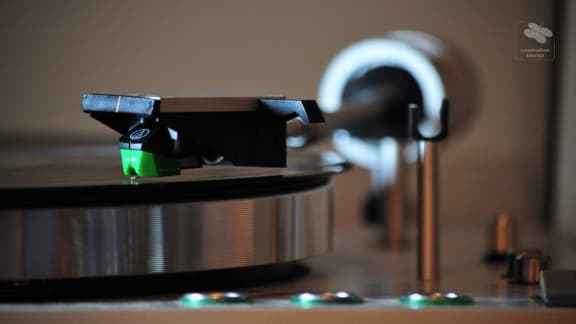AT VM95 E
Published: 13/11/2020
Manufacturing date: 2019
Author: Karsten Hein
Category: Gear & Review
Tag(s): Phono Cartridges
Audio Technica’s VM95 E is an entry-level moving magnet cartridge that succeeded the widely known AT95 E in 2019. The new design includes improvements to the elliptical stylus, which is now thinner, as well as a higher output voltage. The new VM95 engine supports a whole range of compatible styluses, which should make upgrades a little cheaper and more convenient, compared with having to replace the whole cartridge. The available styluses range in 6 steps from simple conical design to complex 'shibata' (patented cut). While the lower-range styluses are bonded to the shaft using a type of solder, the higher-range ones are joined directly, i.e. ’nude’.
Stylus Choices
- AT-VM95 C = Conical - Bonded Round Shank
- AT-VM95 E = Elliptical - Bonded Round Shank
- AT-VM95 SP = Conical SP - Bonded Round Shank (shellack)
- AT-VM95 EN = Elliptical - Nude Round Shank
- AT-VM95 ML = Microlinear - Nude Square Shank
- AT-VM95 SH = Shibata - Nude Square Shank
The VM95 E is equiped with the second possible entry-level stylus and already shows some marked improvements to the discontinued AT95 E, although it maintains some of the typical traits that are to be expected from an elliptical bonded design. Especially when coming from the more sophisticated styluses such as the micro-linear or the shibata, the AT95 E lacks some of the clarity and nuance that the higher up versions are capable of. On Katie Melua’s 2020 “Album No. 8”, for instance, the music appears to be more compressed. A general lack of sonic detail makes her voice seem less revealing and therefore not as intimate as we are used to from the micro-linear stylus.
While there is still sufficient space between the instruments, poorer recordings will more easily sound muffled and restrained. Voices are portrayed in a tonally balanced and full-bodied fashion, however, which is certainly a strength. I feel the VM95 E plays voices tonally more accurate than some of the higher versions, as there is no trace of nasal effects. On the down-side, the elliptical stylus can produce sibilant vocals, as is the case on my not-so-great pressing of Norah Jones’s “Come Away with Me” album, which is still fun on the ML stylus and only just bearable on the E version.
While bass performance is accurate and certainly fuller and more present than on the former AT95 E, bass nuance, extension, and detail is sometimes missing, especially in direct comparison with the higher-priced versions. And this is arguably the aspect that makes it the most difficult for the entry-level AT95 E: the stylus competition that is based on the same engine. When we started our explorations with the AT95 E two years earlier, I did not think I would mind the lack of detail for as long as the music was tonally balanced. Coming from the more recent and more capable ML version on our other system, however, now makes it less enjoyable to listen to AT95 E. Not because it puts up a poor performance, but simply because I have meanwhile come to enjoy the more sophisticated sound, which, sadly, is a well-known audiophile's dilemma: "Once you have heard it, there is no going back."
Specifications
Character: a solid tracker with occasional sibilance, semi-revealing of musical detail, full-bodied, warm and leaning towards neutral, musically balanced
- Frequency Response: 20-22.000 kHz
- Channel Separation at 1KHz: 20 dB
- Input Load: 47 kOhms
- Output at 1KHz 5CM/sec.: 4.0 mV
- Recommended Tracking Force: 2.0 g
- Stylus Type: elliptical stylus, bonded fixture
- Inductance: 550 mH
- Resistance: 485 Ω
- Weight: 6.1 g
- Year: 2019 -
- OSP: EUR 46,00 (Germany)
- Stylus Replacement: Original, EUR 28,00
Audio Technica
Technica House
Unit 5, Millennium Way
Leeds
United Kingdom
LS11 5AL





